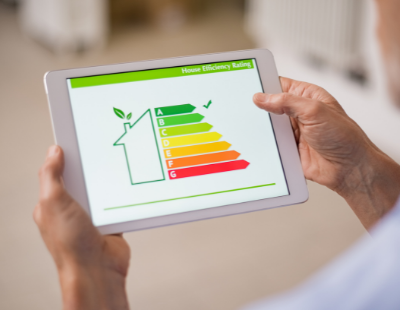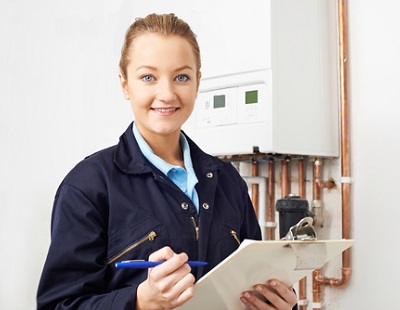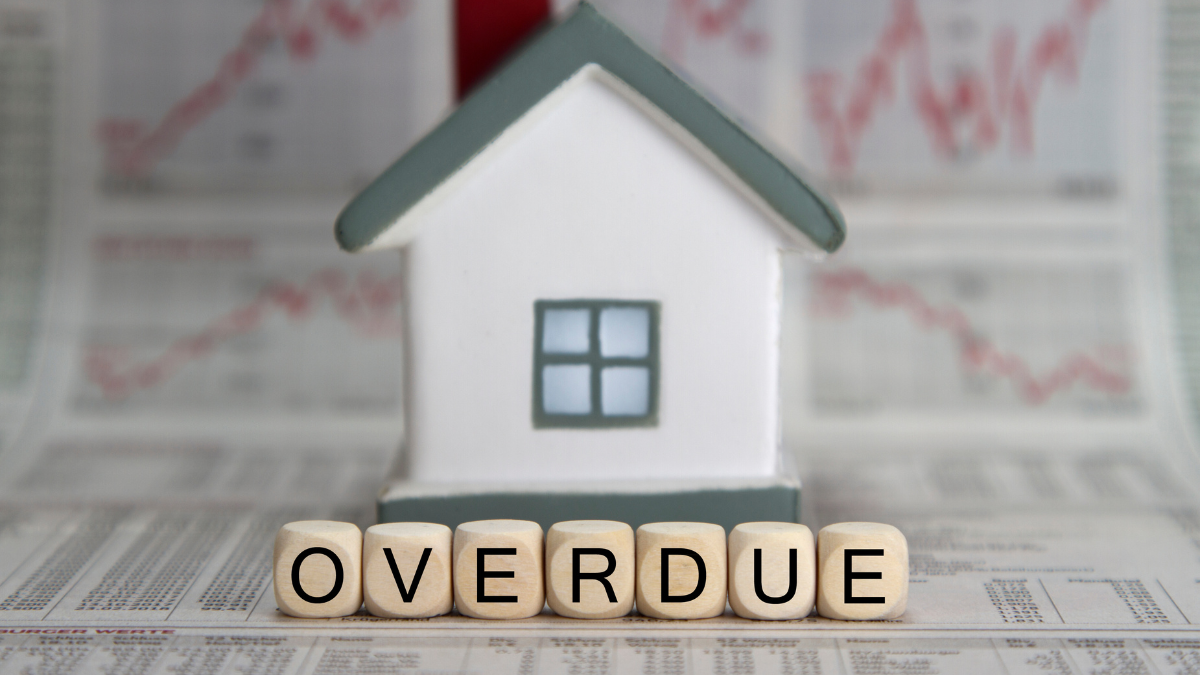Households are big emitters of greenhouse gases, accounting for 26 per cent of total emissions. With targets in place to improve EPC ratings of the UK’s property stock, there are considerable developments to be made to achieve this, with one in six adults wanting to make improvements to the EPC rating of their property, according to research from Mortgage Advice Bureau.
Here are five key steps to lower a household’s carbon footprint:
1. Evaluate your energy consumption
Monitoring your current energy consumption will help you understand how much your household uses and how to bring it down. A smart meter is a great place to start on your journey to reducing your overall footprint as it tracks exactly how much energy you use each day and is something your supplier can install free of charge. To get an even better idea of where you might be wasting energy without realising it, you could invest in an energy audit. They cost between £100-400 and will highlight opportunities specific to your home where energy efficiency can be improved.
2. Try quick energy saving hacks
Quick and easy improvements can help in the shorter term and may save you some money in the short term too. This may include such things as having radiator systems cleaned to maximise their efficiency, switching to longer lasting LED lights where suitable, choosing appliances with a high efficiency rating, and lowering the temperature of your water heater if you find that it is above the recommended 48⁰. Small changes can make a big difference! There are of course other home improvements that can be made which may be considered a longer-term investment, such as installing a heat pump or solar panels. Just over one in ten adults want to add solar panels to their home, and although making these changes may seem costly in the initial sense, they will bring you savings in the long term.
3. Reduce water usage
Using less water is strongly linked to reduced carbon emissions. There are many straightforward ways to achieve this. For example, a tap aerator is a low-cost gadget that restricts the number of litres of water that flow from the tap per minute. An eco-shower head can do the same thing, but for your shower instead.
4. Consider taking out a green mortgage
A mortgage is one of the biggest monthly payments you’ll make, and with lenders now offering green mortgages, they can also play a part in building your Net Zero credentials. A green mortgage rewards you for buying or owning an energy efficient home. Several different types exist, but the one thing they have in common is that they’re only available to those who either buy or own an environmentally friendly home (generally with an A, B, or C EPC rating), or make energy-efficient home improvements. Some products will offer preferential rates to standard mortgages if the property meets certain energy efficiency criteria, whereas others may offer cashback on any money you borrow to upgrade your home's energy efficiency.
5. Draught-proof the home
A lack of effective insulation or windows in need of new seals could be more of a drain on your energy efficiency than you may realise – the more that heat is able to escape your home, the more energy required to keep it nice and warm! If you live in an older property, particularly if it was built before 1990, it’s likely to be draughtier, so it’s certainly worth making sure your home is well insulated. New windows or double glazing are a popular choice for those looking to improve the energy efficiency of their home, with nearly one in six adults intending to introduce these, according to our research. Choosing insulation from recycled materials will also have an impact towards reaching the Net Zero goal.
* Brian Murphy is Head of Lending at Mortgage Advice Bureau *
Want to comment on this story? Our focus is on providing a platform for you to share your insights and views and we welcome contributions.
If any post is considered to victimise, harass, degrade or intimidate an individual or group of individuals, then the post may be deleted and the individual immediately banned from posting in future.
Please help us by reporting comments you consider to be unduly offensive so we can review and take action if necessary. Thank you.















.jpg)









%20(002).png)




.png)





Join the conversation
Jump to latest comment and add your reply
5 Draught proof the home, seal it up and watch the black mould grove up the walls.
No, 3 Reduce-water usage tell that to Thames Water who insist on bigger Mains Supply.
I have two 2 bed Flats Conversions in an 1888 Victorian 2 storey House. The were already used as 2 Flats since 1917 as per Parish Records but I regularised them to comply with Planning & Building Control in 1991 and have completion Certificates.
However the original half inch water mains is still there. I
put in 2 new blue 15mm poly pipes ready for connection and under pavement slab adjacent to existing mains but they wouldn’t connect. They said I should have two 25 mm pipes and do a new road crossing go other side of Road £2’750. now this year I tried again but same story now £4’600, nothing doing as far as I’m concerned I was not looking for more water just separate the 2 supplies & installed 2 meters, simple but no can do. I could do it myself in a couple of hours if allowed and often did before stupid regulation’s. As far as I am concerned it can stay the way it is until I expire. So now both Flats are back with separate Bills based on old Rating System they required to prove what that was but I had the records. Did the Article say they want to Save water & carbon, smaller pipes sufficient with smaller Bills and anyway I would have double the capacity that I have now.
Thames Water is a not for profit Company just as well they wouldn’t earn any.
The number persons that came to look wasting time and
money, all they needed to do was send out a couple of
workmen and get job done in a couple of hours, end the saga.
Not for profit, but what kind of pay package does the CEO receive, you can be sure some one is profiting big time in these outfits
Ah yes £750k pa + 120 / 200% long term incentive
bonuses maybe, don’t know how do earn a bonus if you are not required to make a profit.
I have a 3-bed rental, built in 1959 and it's not Listed. It was an EPC Grade E and my tenant was complaining of high energy bills last winter.
1. I got my domestic EPC assessor to prepare a draft 'as is' EPC and a draft 'predicted' EPC for the house based on the refurb I was planning to do.
2. My handyman installed 100mm of loft insulation between the joists and then an extra 200mm layer of loft insulation at right angles across the joists. This is current Building Regs standard for a new house. Loft insulation is £24 for a big roll at B&Q
3. I had a Google Nest thermostat/timer installed. I ordered this direct from Google and a professional installer fitted it within the price.
4. My plumber installed TRVs on all the rads and showed the tenant how to use them.
5. My electrician fitted a 'kill switch' by the front door wired into the lighting circuits of the Distribution Board. As the tenant leaves the house one push of the button turns off all the lights in the house. Very simple and effective.
6. My handyman changed all non-LED lamps over to Philip LED lamps
7.I had already got my handyman to install solid insulation board between the joists on the ground floor prior to some recarpeting that I did a few years ago.
8. Pioneer Insulation fitted external wall insulation around the walls. This was a big investment but the house now looks brand new and it's a unit that I'm holding long-term.
9. I couldn't justify the expense of new windows so I bought 'poor man's' secondary glazing from a small British company called WindowSkin. I used their product before to cover a large sash window in the winter in a draughty office that I use to rent. It's a custom cut piece of totally clear Perspex that clips on the inside of the window frame in winter to cut out 100% of window draughts. Stores under a bed in the summer.
10. Whilst we were at it my handyman installed a Nuaire DriMaster Heat Positive Input Ventilation (PIV) unit up in the ventilated loft with a outlet in the 1st floor landing ceiling. The tenant was moaning about condensation and being unable to dry clothes/towels. This simple fit-and-forget unit has totally solved these problems.
11. My EPC assessor came back after I had completed these works and gave the house an EPC Grade B by one point (score 81)). This certificate stays on the national database for the next 10-years.
My mortgage broker expects to be able to get a better rate for me now that I have a 10-year valid EPC Grade B when I have to refinance next year.
The above project took me about 10 x phone-calls and 2 x site visits to sort out. It really wasn't that onerous and I was surprised how straightforward it was after I’d done the initial research
I'm now close to finishing a similar package of works on my own family home – this will raise it from an EPC Grade E to a Grade C and will start to really reduce my energy bills in the next few weeks..
Please login to comment